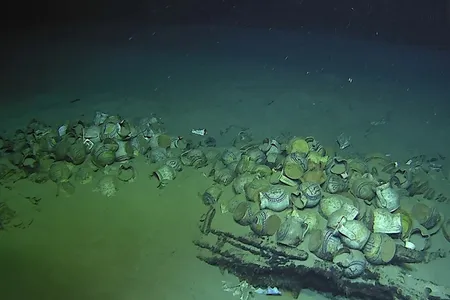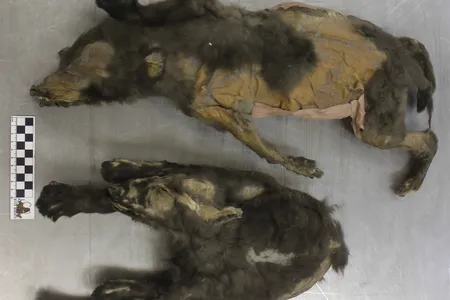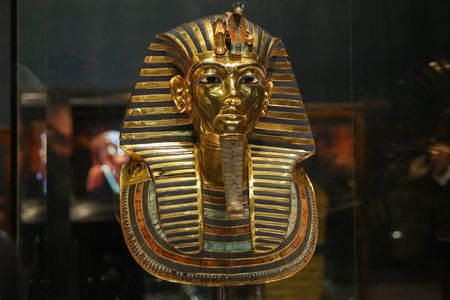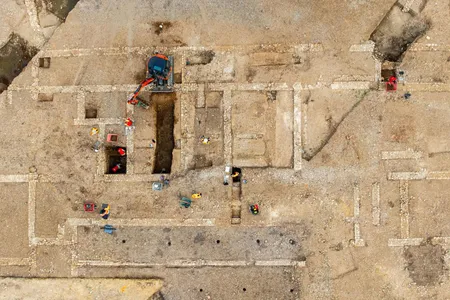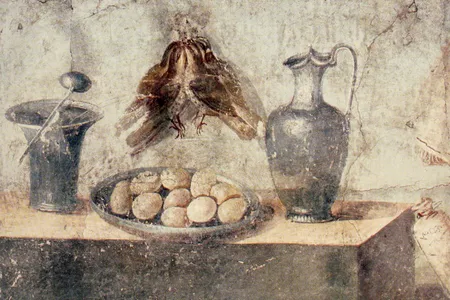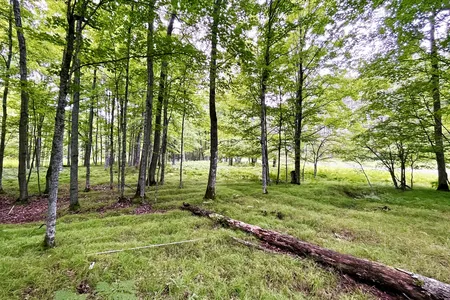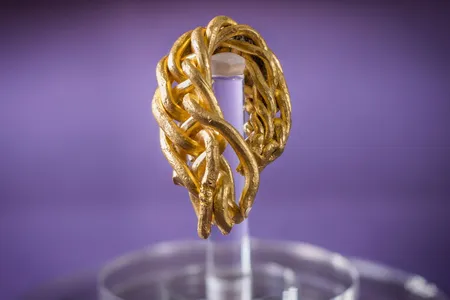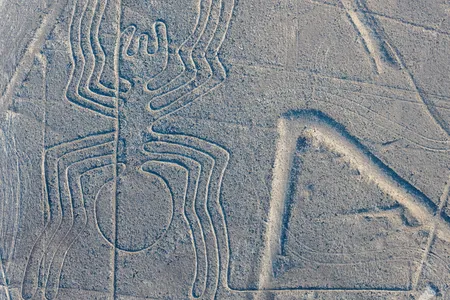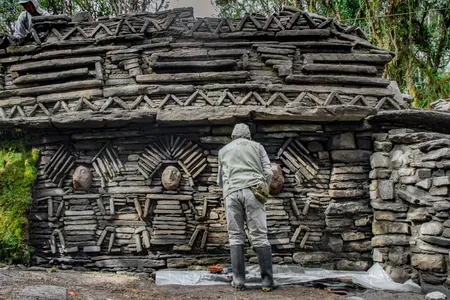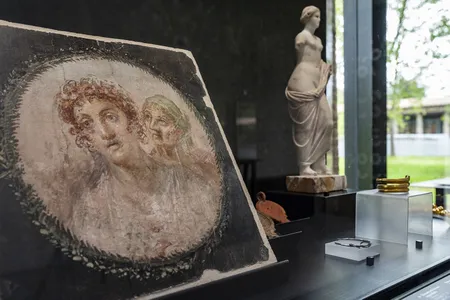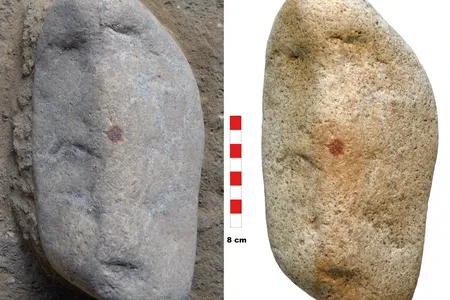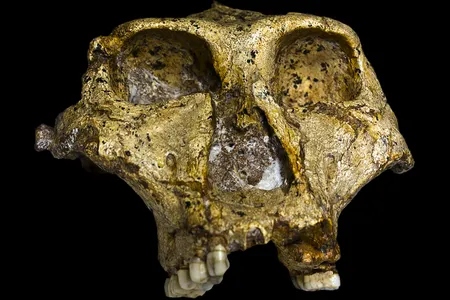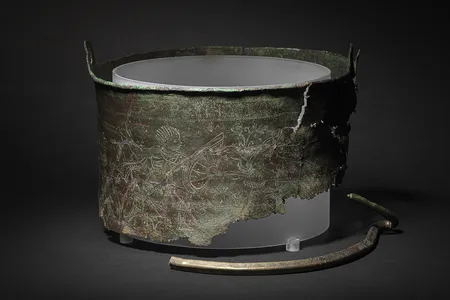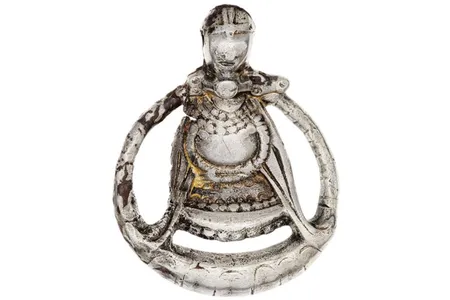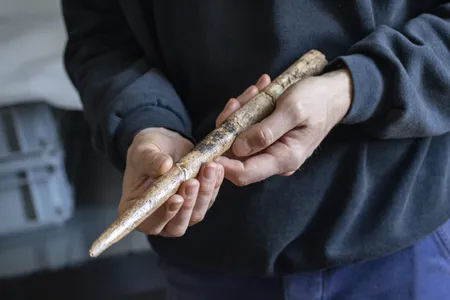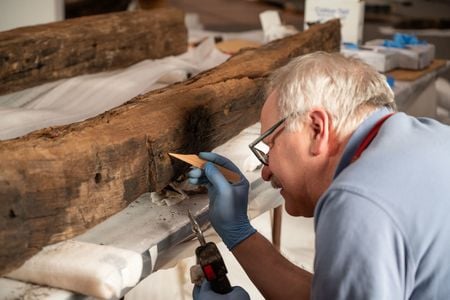Rare 16th-Century Shipwreck Discovered at Record Depth in French Waters
The 98-foot-long vessel was transporting ceramic jugs, ceramic plates and metal bars when it sank off southeastern France nearly 500 years ago
14,000-Year-Old ‘Puppies’ Found in Siberia Were Wolf Littermates Who Dined on Woolly Rhino
Researchers studied chemicals found in the animals’ bones, teeth and tissues, as well as genetic material from their stomach contents
This Viking Woman Was Buried With a Small Dog at Her Feet 1,000 Years Ago
Archaeologists unearthed the burial site during excavations in Norway. They say the discovery provides unique insights into the bonds humans form with their animals
Tutankhamun’s Iconic Gold Death Mask Is Getting a New Home Near the Pyramids of Giza
Soon, the elaborately decorated artifact will be transferred to the brand new Grand Egyptian Museum, joining more than 5,000 other items from the boy king’s tomb
Archaeologists Stumble Onto Sprawling Ancient Roman Villa During Construction of a Road in France
Located near Auxerre, the grand estate once possessed an exorbitant level of wealth, with thermal baths and heated floors
This Ancient Roman Casual Dining Joint Served Fish, Chicken and—Fried Songbird
A new analysis of the bones in the eatery’s garbage pit challenges the elite status of thrush in the Roman diet
Ancient Sarcophagus Unearthed in Israel Portrays an Epic Drinking Contest Between the God Dionysus and the Mythical Hero Hercules
Archaeologists say the marble coffin is the first of its kind found in the region. The story it depicts is more often seen in mosaics
Yemen’s Al-Qahira Castle Survived Centuries of War and Neglect. Can It Survive Its Own Restoration?
With funding for preserving the historic site in jeopardy, local officials are wondering what will come next for the 800-year-old structure
Massive Fields Where Native American Farmers Grew Corn, Beans and Squash 1,000 Years Ago Discovered in Michigan
The ancestors of the Menominee Indian Tribe of Wisconsin built earthen mounds to grow crops. The site could be the largest preserved archaeological field system in the eastern United States
A 1,000 Year-Old Gold Bracelet Fragment Found on a British Isle Dates Back to When Vikings Ruled the Land
Archaeologists believe the piece was made by a skilled goldsmith and was potentially used as currency
The Dead Sea Scrolls Changed Our Understanding of the Bible. Could Some of Them Be Even Older Than We Thought?
A new study combines A.I., radiocarbon dating and handwriting analysis to estimate new dates for some of the ancient scrolls, thought to be some of the earliest surviving fragments of the Old Testament
Nearly Half of the Protected Land Around the Nazca Lines of Peru Is Now Open to Miners
Some environmentalists are concerned about mining operations drawing closer to the ancient landmarks
Archaeologists Discover More Than 100 Structures Linked to a Mysterious Pre-Columbian Civilization in the Remote Peruvian Andes
Based in high-altitude urban centers, the Chachapoya resisted conquest by the Inca Empire for centuries
What Was Daily Life Like for the Women Who Lived in Ancient Pompeii 2,000 Years Ago?
A new exhibition is spotlighting the women who have long been sidelined in histories of the Roman Empire—from mothers and weavers to entrepreneurs and influential tavern owners
Did a Neanderthal Who Lived 43,000 Years Ago Paint a Red Nose on a Rock That Looked Like a Face?
Researchers theorize that an adult male dipped his finger in red ocher and intentionally used the pigment to complete the face he saw on a small granite stone
Scientists Investigate 2.2-Million-Year-Old Tooth Enamel to Unravel the Mysteries of Ancient Human Relatives
By studying proteins preserved in teeth, researchers determined the sex of four Paranthropus robustus individuals that lived in southern Africa
This Bewildering Byzantine Bucket Stumped Archaeologists for Decades. Now, They’ve Finally Discovered Its Purpose
Fragments of the bucket were first found at England’s Sutton Hoo burial site in 1986. New research has revealed that the 1,500-year-old artifact was probably used as a cremation vessel
How Did Vikings View Pregnant Women? New Research Reveals That They Were Sometimes Depicted With Weapons
Researchers studied Old Norse literature and archaeological evidence to shed new light on women’s experiences of pregnancy during the Viking Age
Scientists Discover the Oldest Known Tools Made From Whale Bones, Crafted in Western Europe 20,000 Years Ago
Stone Age humans scavenged the skeletons of several whale species along the Bay of Biscay in what is now southwestern France and northern Spain, according to a new study
Revolutionary War-Era Gunboat Found Underneath World Trade Center Wreckage Finds a Permanent Home in Upstate New York
Researchers are reassembling the ship, which was likely built in the 1770s near Philadelphia
Page 3 of 108
